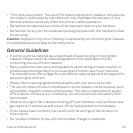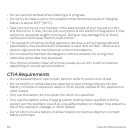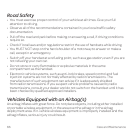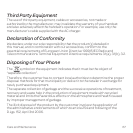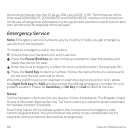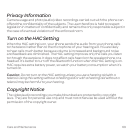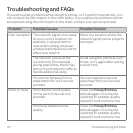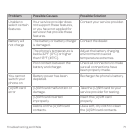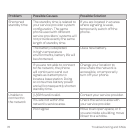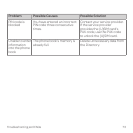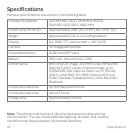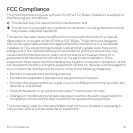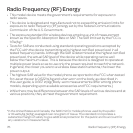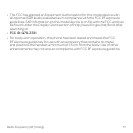Radio Frequency (RF) Energy
• This model device meets the government’s requirements for exposure to
radio waves.
• This device is designed and manufactured not to exceed the emission limits for
exposure to radio frequency (RF) energy set by the Federal Communications
Commission of the U.S. Government.
• The exposure standard for wireless devices employs a unit of measurement
known as the Specific Absorption Rate or SAR. The SAR limit set by the FCC is
1.6W/kg.*
• Tests for SAR are conducted using standard operating positions accepted by
the FCC with the device transmitting at its highest certified power level in all
tested frequency bands. Although the SAR is determined at the highest certified
power level, the actual SAR level of the device while operating can be well
below the maximum value. This is because the device is designed to operate at
multiple power levels so as to use only the power required to reach the network.
In general, the closer you are to a wireless base station antenna, the lower the
power output.
• The highest SAR value for the model phone as reported to the FCC when tested
for use at the ear is 0.622 W/kg and when worn on the body, as described in
this user guide, is 0.667 W/kg (Body-worn measurements differ among phone
models, depending upon available accessories and FCC requirements.)
• While there may be differences between the SAR levels of various devices and at
various positions, they all meet the government requirement.
76 Radio Frequency (RF) Energy
* In the United States and Canada, the SAR limit for mobile phones used by the public
is 1.6 watts/kg (W/kg) averaged over one gram of tissue. The standard incorporates a
substantial margin of safety to give additional protection for the public and to account for
any variations in measurements.



